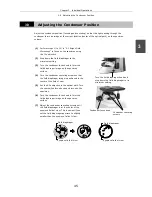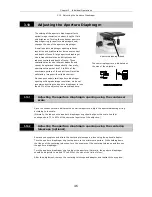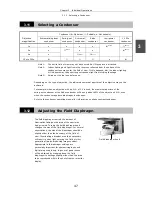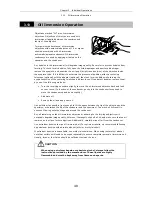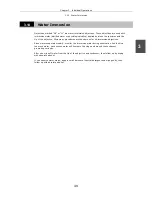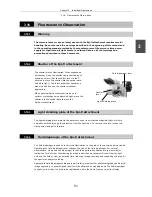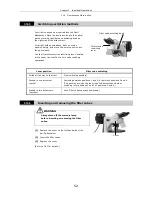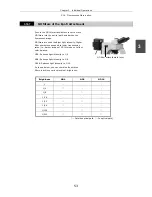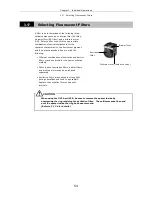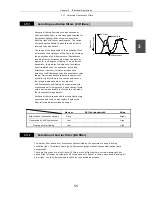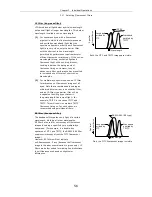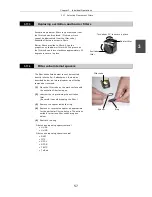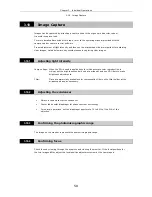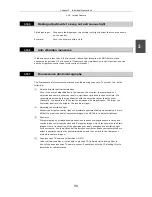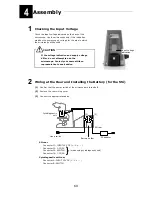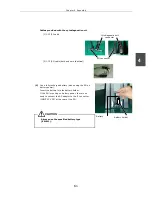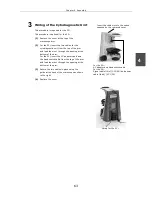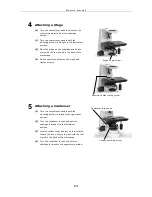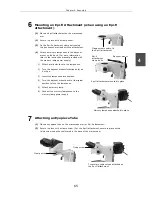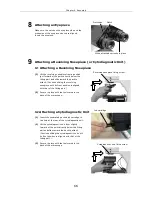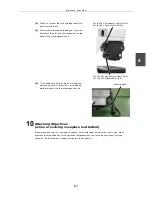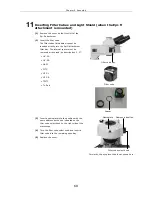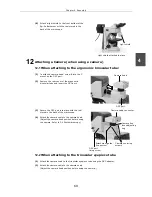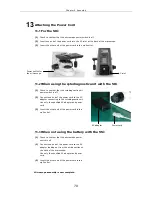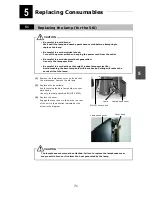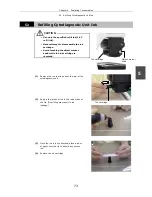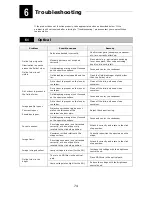
Chapter 3 Individual Operations
3.18 Image Capture
59
3
3.18.5
Making adjustments to keep out extraneous light
Field diaphragm: Stop down the diaphragm to a setting just slightly wider than the area shown
on the monitor.
Eyepiece:
Cover the eyepiece with a cloth.
3.18.6
Anti-vibration measures
If the exposure is less than 1/8 of a second, reduce light intensity with ND filters to make
exposures longer than 1/8 of a second. (If accurate color reproduction is not important, you can
use the brightness control knob to reduce light intensity.)
3.18.7
Fluorescence photomicrography
The fluorescence of fluorescent specimens may fade during exposure. To prevent this, do the
following:
(1) Select a brighter optical combination.
Even if the overall magnification is the same on the monitor, the combination of
objective and camera zoom can result in significant variations in exposure time. We
recommend increasing the magnification with the objective rather than the zoom.
(Generally, the aperture of the objective increases with magnification. The larger the
numerical aperture, the brighter the resulting image.)
(2) Adjusting the excitation light
Excessively bright excitation light will accelerate specimen fading while making it more
difficult to acquire suitable fluorescent images. Use ND filters to adjust brightness.
(3) Specimen
Photomicrography of faded specimen sections requires prolonged exposure times and
results in poor color reproduction and low-quality images. Move the specimen to obtain
images from a fresh section of the specimen previously unexposed to excitation light.
For best results, use the differential interference contrast or phase contrast methods to
select a specimen section for photomicrography, and then switch to the fluorescent
method to capture images.
(4) Supersensitive TV camera (other than DS-5M)
Under certain conditions, it may help to place an IR (infrared ray) blocking filter in
front of the supersensitive TV camera sensor. Experiment with the IR blocking filter to
determine its characteristics.

